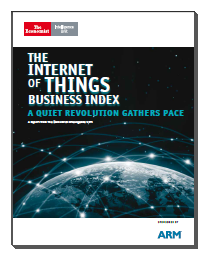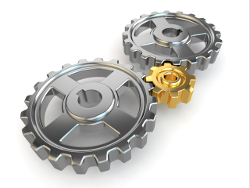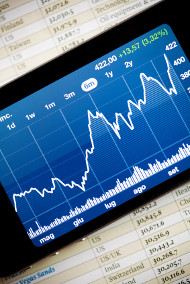Business Wakes Up to the IoT
With a blast on the media trumpets and all the blaring fanfare that goes with it, the dawn of the Internet of Things (IoT) is being heralded as the next big thing in computing. Visionaries marvel, gamers shrug, and homeowners stare up in wonder, while business people get up, make coffee, and do what they do best: check it out to see if there is any real value here.
A recent Intelligence Unit report from the Economist magazine, sponsored by ARM, titled The Internet of Things Business Index (article, video) indicates that, sure enough, “the IoT is on the agenda at most organizations–even if they disagree about its scope.” Yes, business is waking up to the Internet of Things, and is starting to investigate the opportunities.

The more cautious companies are watching the early movers, and learning from their achievements and mistakes (42%). Others are bringing in consultants and outside experts to help them navigate this new field of possibilities (41%). Still others are doing market research to see what opportunities are to be had in their respective domains (27%). A few are even releasing test products with an IoT component or tie-in to gauge the response.
One concrete step being taken by most players is to beef up basic capability. There is some acknowledgement of a lack of knowledge and skills at both the employee and management level regarding the IoT, and so many companies are either hiring people with the know-how (31%), or getting their staff trained (36%).
In addition to this need for better knowledge and skills, respondents to the survey highlighted other areas that could impact the success of the IoT in their businesses. Among these: infrastructure investment will be costly, many products and services are not inherently IoT-friendly, and consumers will need to be educated.
There is also some concern about developing standards for intercommunication between devices. “Beyond storing, securing and analyzing these data,” the report states, “companies should also consider how they manage the commercial sharing of the data as the IoT becomes a platform for trading information.” There is some agreement that the full value of the IoT will only be realized when there is universal participation across the board. If not we may end up, they warn, with an “internet of silos.”
From our perspective, interconnectivity of data among the players in the IoT is key to its success. The report says that Liz Brandt, CEO of Ctrl-Shift “envisages the IoT becoming one big trading system for data. The question, she says, is how those data can be traded across the whole ecosystem.” How, indeed. That is the challenge, and the opportunity for those who get it right.
 Automation technology is converging to the point where it is possible to host a single software development environment and runtime application on one control computer to provide multiple functionality over a single network.
Automation technology is converging to the point where it is possible to host a single software development environment and runtime application on one control computer to provide multiple functionality over a single network.





